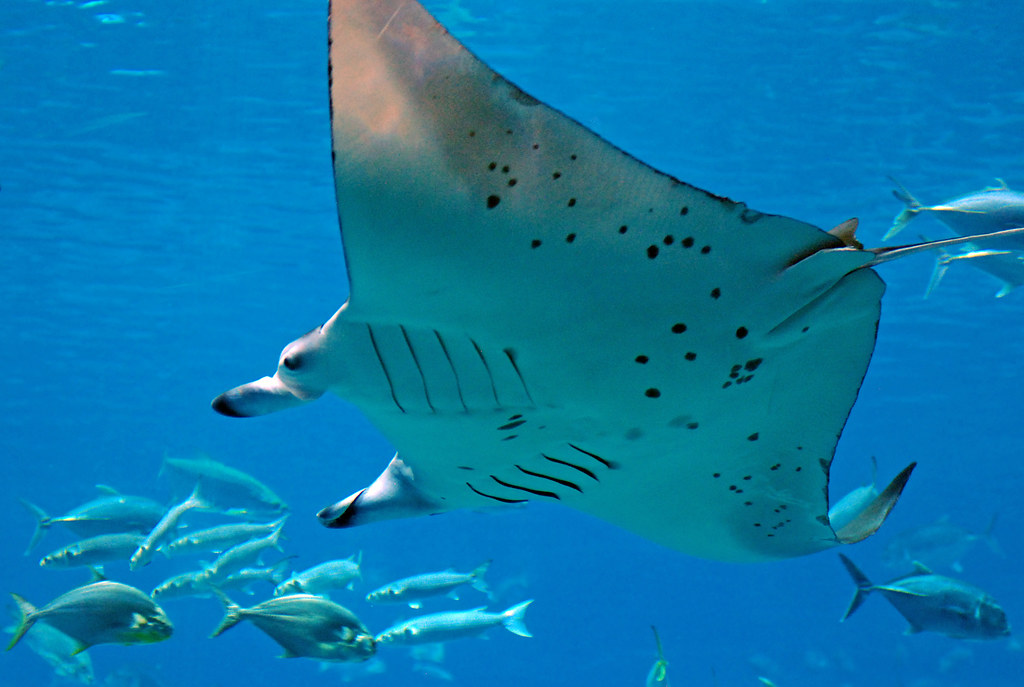今年第17屆華盛頓公約會議(CoP17)24日起在約翰尼斯堡舉行為期12天的密集談判,總計182個國家加上歐盟出席,訂定出管理全世界野生物的重要依據。會議上將看到在曼谷CoP16之後,鯊魚和魟魚的保護進度。
鯊魚和魟魚是否列附錄二 即將揭曉
目前有五種鯊魚物種——遠洋白鰭鯊、鼠鯊和三種鎚頭鯊——以及所有的魟魚物種在CITES附錄二中,可以貿易但是受到管制,以預防過度開發。
此外CoP17上也會決定是否將鐮狀真鯊(Carcharhinus falciformis)、長尾鯊和魔鬼魟納入CITES附錄二。
生生不息的犯罪集團
野生物走私總額到底是多少呢?TRAFFIC全球溝通協調人Richard Thomas博士認為不應評估這個問題,強調野生物走私總額對保育不但沒有幫助,還吸引更多犯罪者加入。
不過CITES也聯合夥伴強力反擊。2010年,國際打擊野生物犯罪聯盟(International Consortium on Combatting Wildlife Crime, ICCWC)成立,成員包括CITES、國際刑警組織、聯合國藥物與犯罪辦公室、世界銀行和世界海關組織。
ICCWC將在CoP17上報告運作狀況。
ICCWC的宗旨是改變目前風險偵測和執法步調太慢的現況,讓嚴重野生物和森林犯罪能被強力、快速反制。前國際動物福利基金會成員、英國環境與社會問題智庫公司Bumblebee Connect策略總監Satyen Sinha說,ICCWC犯罪分析工具是目前最重要的反制工具之一。ICCWC犯罪分析工具自2012年起,協助許多政府管理地面的野生物犯罪戰爭。
Sinha表示,希望這次CITES會議能通過穿山甲提案、拒絕史瓦濟蘭的白犀牛提案、加強保護獅子,並且拒絕歐盟的全票制提案。
歐盟全票制將影響野生物保育。歐洲的投票邏輯是讓全部27個成員國在一案上採取相同立場,全票制會增加歐盟在CITES會議上的影響力。
CITES中,提案需要2/3同意方能通過,因此歐盟的27票將有決定性的影響力,甚至能扭轉提案的命運。如2013年,在丹麥一國反對之下,北極熊貿易禁令未能通過。丹麥的理由是其領地格陵蘭有權狩獵北極熊。針對此議題其他歐盟國家全都棄權,只有丹麥反對,北極熊狩獵活動繼續進行。
CITES運作方式
CITES透過進出口許可證制度管理特定物種的國際貿易。各成員國必須指定一個管理機構和科學機構,在美國就是漁業與野生物管理局。科學機構負責針對貿易對物種的影響提出建議,管理機構負責發許可證。
182個成員國表決物種是否加入CITES附錄一、二和三,三個附錄保護等級不同。
附錄一物種禁止商業貿易,附錄二或三只要遵守CITES程序和地方法令就可貿易。
Vulnerable Sharks and Rays
Delegates to CoP17 will receive updates on actions taken to protect sharks and rays following the last meeting of the Parties, CoP16 in Bangkok.
There, five shark species – the oceanic white tip, porbeagle and three species of hammerhead – and all manta rays were given protection under CITES Appendix II, with trade in these species allowed but regulated to prevent over-exploitation.
In Johannesburg, CoP17 Parties will be asked to consider three more proposals to bring sharks and rays under CITES Appendix II trade controls, to include: the Silky shark, Carcharhinus falciformis; Thresher sharks, and Devil rays.
Crime Syndicates Never Sleep
How much is the illegal wildlife trade worth?
Dr. Richard Thomas, TRAFFIC Global Communications Coordinator, believes that valuing such trade is counterproductive.
“Messaging that emphasizes the supposed high value of wildlife products on the black market risks attracting the attention of the very criminal elements the world is seeking to deter,” he told ENS.
But CITES is fighting back by forming a powerful partnership. In 2010, ICCWC, (say ick-wic) was formed. The abbreviation stands for International Consortium on Combatting Wildlife Crime. It is a collaboration among CITES, the international police force INTERPOL, the United Nations Office on Drugs and Crime, the World Bank, and the World Customs Organization.
At CoP17, ICCWC will report to the delegates on its activities.
The aim of ICCWC is to usher in a new era where perpetrators of serious wildlife and forest crime will face a formidable and coordinated response, rather than the present situation where the risk of detection and punishment is all too low.
Satyen Sinha, director of strategy at Bumblebee Connect, an international knowledge startup for environmental and social problems based in Manchester, UK, believes that “the ICCWC Toolkit is one of the most important tools.” Available since 2012, the Toolkit helps struggling governments manage this wildlife war on the ground.
Sinha, formerly with the International Fund for Animal Welfare, would like to see accomplishments at this CITES conference that include: 1) approval of the pangolin proposals, 2) rejection of the Swaziland white rhino proposal, 3) stronger protections for lions, and 4) rejection of the EU bloc voting proposal.”
The EU’s bloc vote can be a problem for wildlife.
The logic behind the EU vote is that by having all 27 member states adopt a common position over a proposal, the bloc vote can increase Europe’s influence at the CITES conference.
A two-thirds majority is needed for proposals within CITES to pass, so the EU’s 27 votes make up a big chunk of the vote. Sometimes, it’s enough to determine the fate of a proposal, such as CITES 2013 rejection of a ban on polar bear hunting due to the opposition of Denmark, arguing for the right of its satellite state Greenland to hunt the bears. All EU countries abstained, except Denmark which voted against the proposal. The hunt continues.
So, How Does CITES Work?
CITES regulates international trade in selected species with a licensing system — import and export permits. Each Party must designate a Management Authority and a Scientific Authority. For the United States, the U.S. Fish and Wildlife Service fills both roles. The Scientific Authority “advises on the effects of trade on the status of the species” and the Management Authority issues permits.
Delegates of the 182 Parties vote to include species on one of three lists — Appendix I, II, or III – that divide the species “according to the degree of protection they need.”
Commercial trade Appendix I listed species is banned. Trade in species listed on Appendix II or III is legal as long as CITES procedures and domestic laws are followed.
※ 全文及圖片詳見:ENS







